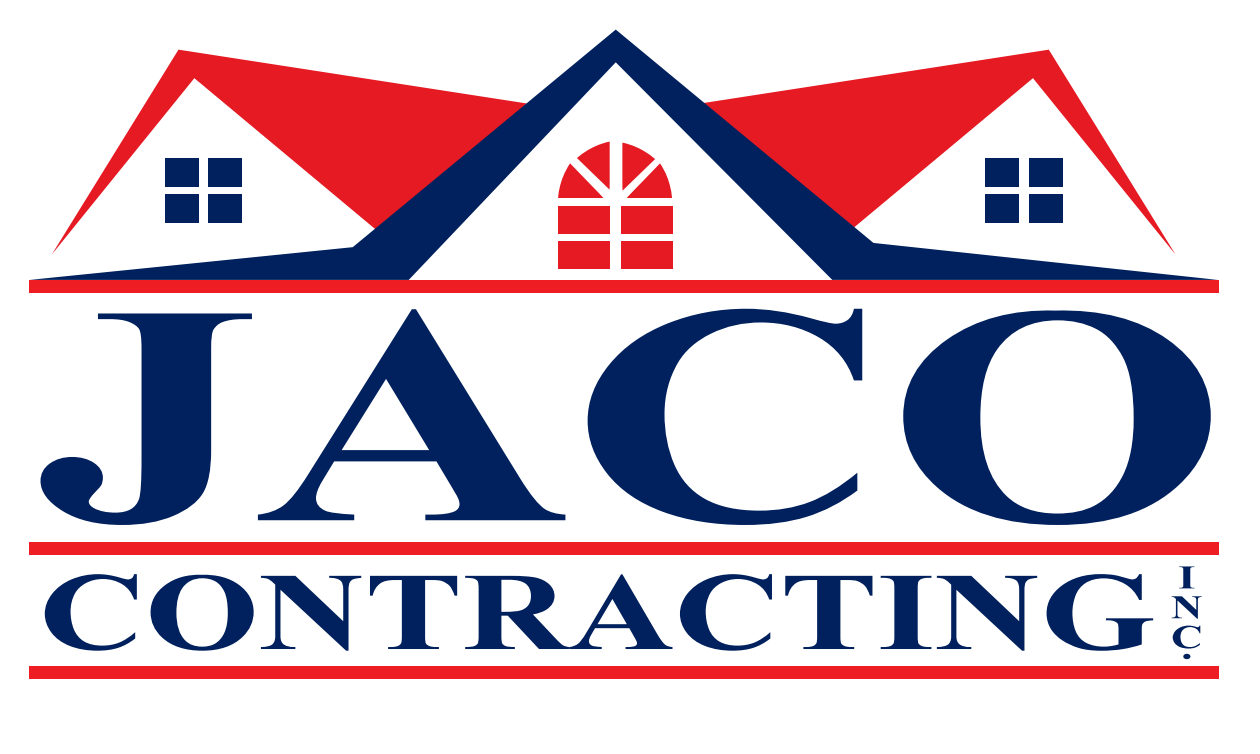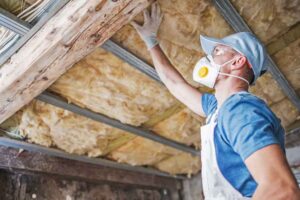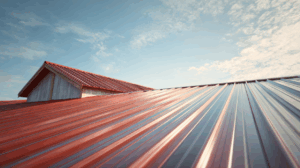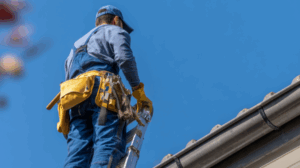As temperatures drop and summer storms give way to cooler, wetter weather, your roof becomes even more essential in protecting your home. Fall is the ideal time for homeowners across Georgia to perform essential maintenance tasks that can help prevent costly repairs and ensure your roof is winter-ready.
In this guide, we’ll walk you through smart, practical fall roof maintenance tips specifically for Georgia homeowners. From cleaning gutters to checking shingles, here’s what you need to know to prepare your roof for the colder months ahead.
Why Fall Roof Maintenance Matters in Georgia
While Georgia winters may not bring the heavy snow loads seen up north, we still face our share of seasonal hazards: falling leaves, heavy rain, freeze-thaw cycles, and cold snaps. These conditions can expose weak points in your roofing system.
Regular maintenance in the fall is your best defense against:
- Leaks caused by clogged gutters or cracked flashing
- Mold or mildew from standing water
- Heat loss due to poor attic ventilation
- Damage from sudden freezes
Preventative care now can save you from emergency repairs later.
8 Fall Roof Maintenance Tips for Georgia Homeowners
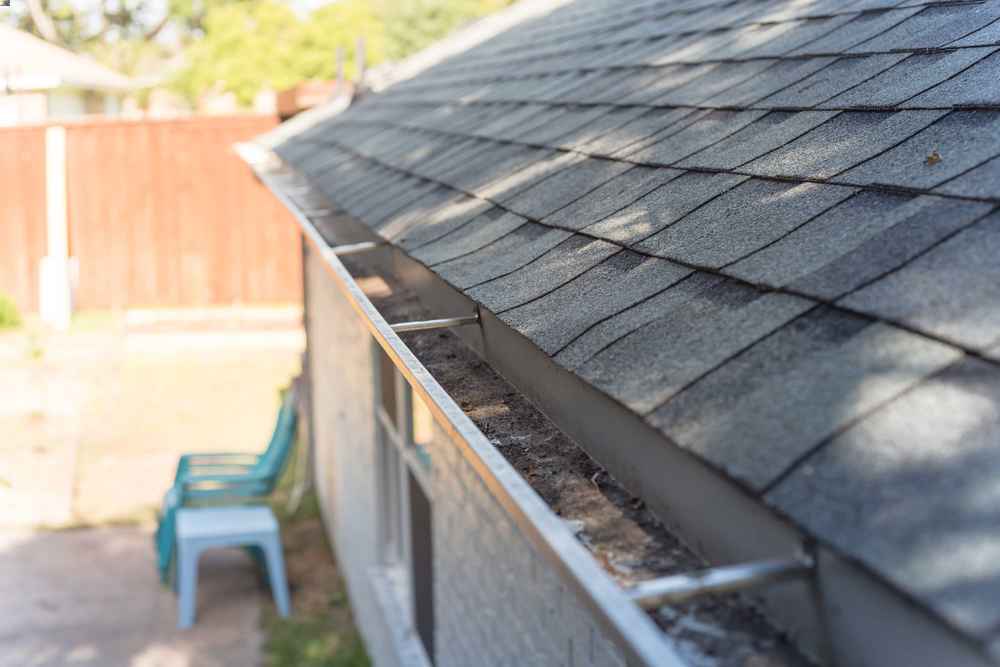
1. Clean Out Gutters and Downspouts
Leaves, twigs, and debris can accumulate quickly in Georgia during the fall. If your gutters are clogged, rainwater can overflow, damaging fascia boards, siding, and your roof’s edge.
Tip: After clearing out debris, flush the gutters with water to check for proper drainage. Make sure downspouts extend at least 3 feet from the foundation.
2. Inspect Shingles for Damage or Wear
Use binoculars or hire a professional to look for:
- Cracked or curling shingles
- Bald spots from granule loss
- Missing shingles or nail pops
These are early indicators that your roof may need repair or replacement before winter arrives.
3. Check for Flashing and Sealant Failures
Flashing is installed around chimneys, skylights, and roof joints to keep water out. Fall is the perfect time to check if the flashing is rusted, loose, or cracked.
Silicone or tar sealant used around roof penetrations should also be inspected — temperature swings can cause it to deteriorate over time.
4. Trim Trees and Overhanging Branches
Trees that grow close to your roof pose multiple threats:
- Branches can scrape and damage shingles
- Falling limbs can puncture the roof during storms
- Leaves can clog gutters and trap moisture
Tip: Keep branches trimmed back at least 6 feet from the roof to prevent damage and improve air circulation.
5. Check Attic Insulation and Ventilation
Many homeowners forget that roof health starts inside the attic. Poor ventilation can lead to condensation buildup, mold growth, and energy inefficiency during the colder months.
Look for:
- Moisture on rafters or insulation
- Inconsistent temperatures across the attic
- Blocked soffit or ridge vents
If unsure, a roofing pro can help assess ventilation as part of your inspection.
6. Look for Signs of Animal or Pest Intrusion
As temperatures drop, animals look for warm places to nest — and your attic may be their top choice. Inspect the roof and fascia for:
- Gaps or chewed areas near vents
- Droppings or nesting materials in the attic
- Loose soffits or gable vents
Squirrels, raccoons, and birds can cause significant damage to insulation and wiring.
7. Check for Mold, Algae, or Moss Growth
If you notice green or black streaks on your roof, it could be algae, moss, or mold — especially on north-facing roof slopes that get less sunlight.
While these organisms may seem cosmetic, they trap moisture and can damage shingles over time.
Pro Tip: Avoid pressure washing. Instead, use a roof-safe moss and algae treatment or contact a professional.
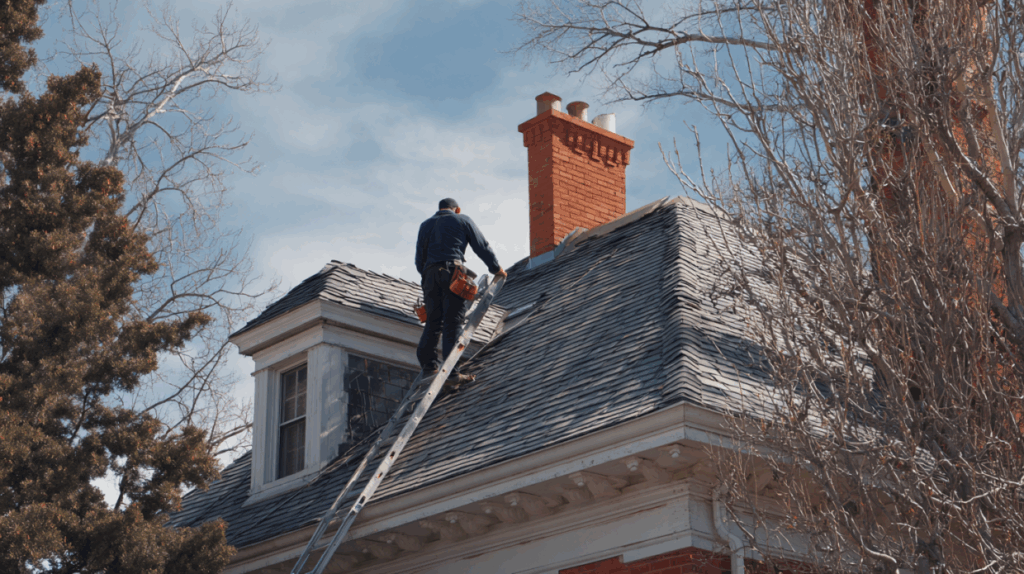
8. Schedule a Professional Roof Inspection
There’s only so much you can safely see from the ground. A professional roofing contractor can:
- Identify hidden signs of wear
- Recommend necessary repairs
- Provide documentation for insurance or maintenance records
Winter Roof Preparation Tips for Georgia Homes
Once your fall checklist is complete, take these extra steps to prepare for winter:
- Ensure proper attic insulation to prevent heat loss and ice dams
- Check chimney flashing and cap integrity if you use a fireplace
- Stock up on emergency tarps in case of unexpected winter storm damage
- Review your homeowner’s insurance policy for roof-related coverage
How JACO Contracting Supports Georgia Homeowners Year-Round
At JACO Contracting, we understand the challenges Georgia homeowners face during seasonal transitions. Our experienced roofing team offers:
- Free, no-obligation fall roof inspections
- Repair and maintenance services tailored for Georgia’s climate
- Insurance claim assistance when needed
- Fast, reliable scheduling before peak winter demand
With offices serving Atlanta, Chattanooga, and surrounding areas, we’re your trusted local partner for year-round roof care.
FAQs About Fall Roof Maintenance in Georgia
How often should I clean my gutters in Georgia?
At least twice per year, especially in fall. If your home is surrounded by trees, check monthly during peak leaf-drop.
Can I perform roof maintenance myself?
Basic tasks like clearing gutters and inspecting from the ground are safe for DIY. But for anything requiring a ladder or detailed inspection, hire a professional to avoid injury or missed damage.
Is fall too late for roof repairs?
Not at all. Fall is actually one of the best times for roof work — weather is mild, and materials adhere well. Don’t wait until winter hits.
Don’t Wait Until It’s Too Late — Schedule Your Free Inspection
Fall roof maintenance isn’t just a checklist — it’s an investment in your home’s protection and your peace of mind. Whether you’re preparing for colder weather or looking to prevent costly repairs, the time to act is now. If you’re unsure where to start, let JACO Contracting help. Schedule your free fall roof inspection today and head into winter with confidence.
